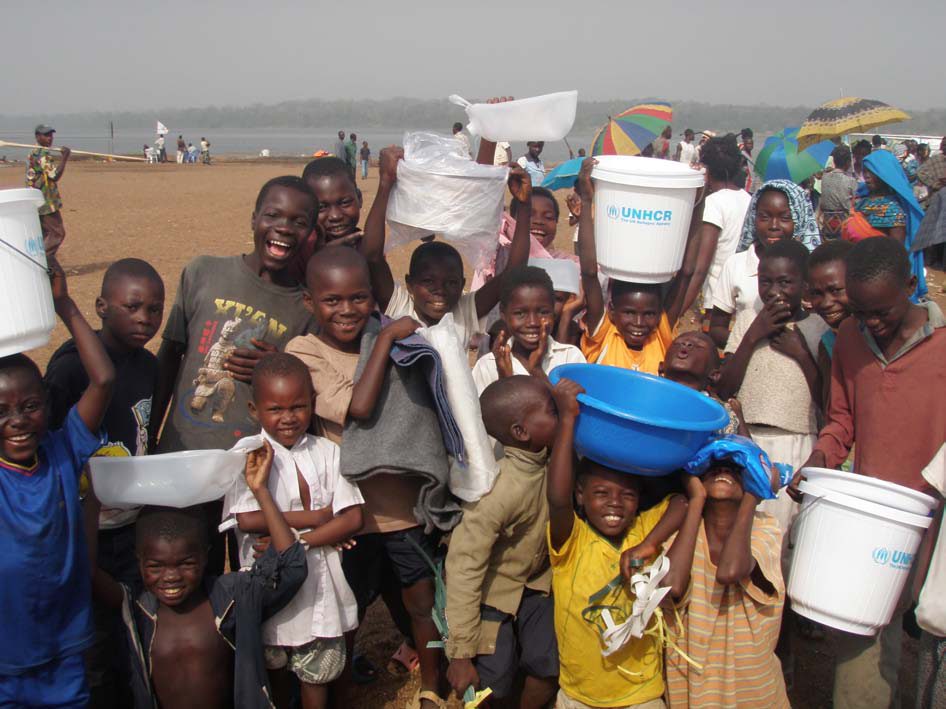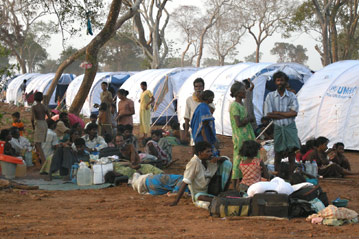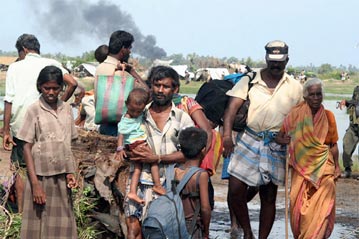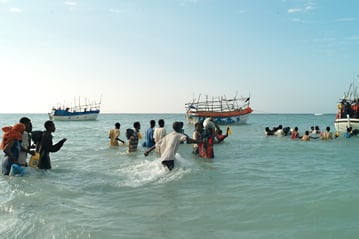Burundi to set up refugee camp for new Congolese arrivals following deadly attack
Burundi to set up refugee camp for new Congolese arrivals following deadly attack

BUJUMBURA, Burundi, Aug 16 (UNHCR) - The hundreds of empty ammunition shells scattered around burned down plastic hangars underlined the severity of the attack at the Gatumba transit centre. It came as Congolese refugees slept on the night of Friday, the 13th of August.
Men armed with machetes, automatic weapons, grenades and torches swept into the camp amid the beating of drums and chants of "Hallelujah." In the wake of the attack, 147 Congolese, mostly women and children, lay dead. Three others among more than 100 injured subsequently died in hospital.
Some of the corpses were mutilated and headless. Others were burned beyond recognition. Some heads were bashed in. Mothers were killed obviously while trying to protect their children with their bodies. A nearby Burundi army base also came under attack, but a facility for 300 Burundi returnees from the Democratic Republic of the Congo (DRC) was left untouched.
UNHCR staff and other rescuers who rushed to the scene of the carnage at daybreak found traumatized survivors wailing and weeping in each other's arms. The stench of death and smoke from the torched hangars still enveloped the camp that had been temporary home to some 860 refugees who had fled recent violence in the DRC.
High Commissioner Ruud Lubbers called it "an appalling massacre of innocent civilians." He also made an urgent appeal to the Burundian government, reiterating the UN refugee agency's repeated requests, that it provide a camp for newly arrived Congolese refugees.
On Monday, UNHCR received confirmation that the Burundian government had agreed to authorize a secure camp to be set up in the interior for these refugees. Zobida Hassim-Ashagrie, deputy director of UNHCR's Africa bureau based in Geneva, is to fly to Bujumbura later Monday, carrying a message from Lubbers to the Burundi president, appealing that it take immediate measures to get the refugees out of harm's way.
Gatumba, located midway on a 30-km route between the Burundi capital of Bujumbura and the DRC border town of Uvira, is one of three transit centres in Burundi's western frontier sheltering some 20,000 Congolese who fled a rebellion in the DRC's South Kivu province in June. The uprising was staged by disgruntled commanders in the integrated army of the transitional government formed in 2003 under a peace accord that ended a five-year civil war in the DRC.
The commanders were then protesting the alleged mistreatment of the Banyamulenge, a Tutsi ethnic group. They say that the DRC government has not done enough to stop the harassment of the Banyamulenge by Rwandan Hutu insurgents who were blamed for the 1994 genocide of Tutsis in Rwanda and who operate with impunity in western DRC. Most of the Congolese who went to Gatumba are Banyamulenge.
From the outset of the influx, UNHCR has expressed concern at the security situation along the border region, where Burundi rebels and armed elements from the DRC operate. On Aug. 2, the refugee agency began to relocate the Congolese to Gasorwe refugee camp farther in the interior of Burundi. But Gasorwe was already crammed with 8,000 Congolese who had arrived in Burundi previously and has room only for 1,000.
There was also resistance from the refugees themselves, who wanted to stay close to the border so they could look after the property they left behind. DRC officials encouraged the refugees to remain where they were, saying that the situation in the Kivus had stabilized, that it was time for them to return to help rebuild the nation and participate in elections in October 2005. Senior DRC officials visited the camps several times. A day before the attack, Azarias Ruberwa, one of the DRC's four vice presidents, visited the transit camps to reiterate his plea for the refugees to go back home to demonstrate that the peace process was on track in their country.
Some relief workers say that the high profile visits by the DRC officials may have prompted the attack reminiscent of the Rwanda genocide a decade ago that left more than 800,000 mostly Tutsis dead.
The FNL, or Forces for National Liberation, in Burundi publicly claimed responsibility for the massacre. The FNL, made up of ethnic Hutus, is the only rebel faction that has not signed a peace accord designed to end civil war that has torn Burundi since the assassination of its first democratically elected Hutu president in 1993. It obviously wanted to show that it remains a force in Burundi. There were also indications that the Rwandan Interahamwe, who were involved in the Rwanda genocide, participated in the grisly assault at Gatumba from bases in the DRC.
The UN refugee agency has moved 500 survivors of the Gatumba slaughter to a nearby school and another 100 went on their own to find accommodation in Bujumbura. "We did everything we can to protect the refugees," said one UNHCR staff member. But everything the agency did was not enough in a region where governments have little control over forces that are constantly conjuring the most surreal and outrageous form of evil against the innocent to pursue their objectives.








